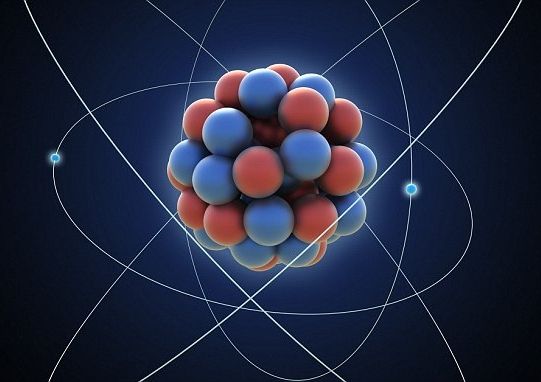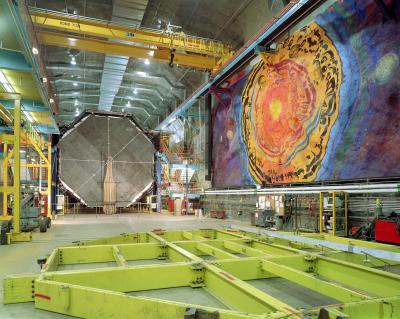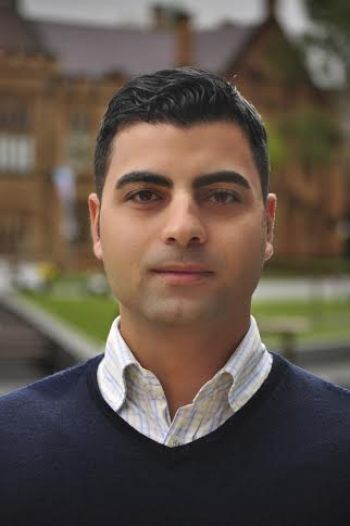Archive for the ‘quantum physics’ category: Page 768
Jul 19, 2016
Electron spin control: Levitated nanodiamond is research gem
Posted by Karen Hurst in categories: nanotechnology, quantum physics
I’m telling folks there is much to be learn in the usage of natural and synthetic resources especially around diamonds — Nanodiamonds Magic.
WEST LAFAYETTE, Ind. — Researchers have demonstrated how to control the “electron spin” of a nanodiamond while it is levitated with lasers in a vacuum, an advance that could find applications in quantum information processing, sensors and studies into the fundamental physics of quantum mechanics.
Electrons can be thought of as having two distinct spin states, “up” or “down.” The researchers were able to detect and control the electron spin resonance, or its change from one state to the other.
Continue reading “Electron spin control: Levitated nanodiamond is research gem” »
Jul 19, 2016
Quantum computers show potential to revolutionize chemistry
Posted by Karen Hurst in categories: chemistry, neuroscience, quantum physics, robotics/AI, solar power, supercomputing, sustainability
Like this feature on QC.
If you have trouble wrapping your mind around quantum physics, don’t worry — it’s even hard for supercomputers. The solution, according to researchers from Google, Harvard, Lawrence Berkeley National Laboratories and others? Why, use a quantum computer, of course. The team accurately predicted chemical reaction rates using a supercooled quantum circuit, a result that could lead to improved solar cells, batteries, flexible electronics and much more.
Chemical reactions are inherently quantum themselves — the team actually used a quote from Richard Feynman saying “nature isn’t classical, dammit.” The problem is that “molecular systems form highly entangled quantum superposition states, which require many classical computing resources in order to represent sufficiently high precision,” according to the Google Research blog. Computing the lowest energy state for propane, a relatively simple molecule, takes around ten days, for instance. That figure is required in order to get the reaction rate.
Continue reading “Quantum computers show potential to revolutionize chemistry” »
Jul 19, 2016
Post-Quantum Cryptography Aims To Fend Off Advanced Hack Attacks
Posted by Karen Hurst in categories: cybercrime/malcode, encryption, internet, quantum physics
Luv it; more believers.
Quantum computers promise to enable faster, far more complex calculations than today’s silicon chip-based computers. But they also raise the possibility that future computers could retroactively break the security of any digital communications that exist today, which is why Google is experimenting with something called “post-quantum cryptography.”
While quantum computer development remains in its early stages, some such computers are already in operation. In theory, future generations of quantum computers could “decrypt any Internet communication that was recorded today, and many types of information need to remain confidential for decades,” software engineer Matt Braithwaite wrote yesterday in a post on Google’s security blog. “Thus even the possibility of a future quantum computer is something that we should be thinking about today.”
Continue reading “Post-Quantum Cryptography Aims To Fend Off Advanced Hack Attacks” »
Jul 19, 2016
Weird quantum effects travel over hundreds of miles
Posted by Karen Hurst in categories: particle physics, quantum physics

I shared this yesterday; however, another article with another spin (no pun intended)
Working at the Massachusetts Institute of Technology’s (MIT) Fermilab physics laboratory in Illinois, a team of physicists studied the states of neutrinos, among the smallest components of an atom.
Continue reading “Weird quantum effects travel over hundreds of miles” »
Jul 18, 2016
Weird quantum effects stretch across hundreds of miles
Posted by Karen Hurst in categories: particle physics, quantum physics
Interesting study occurring on subatomic particles (aka neutrinos) in how they can be in superposition, without individual identities, when traveling hundreds of miles.
Now, MIT physicists have found that subatomic particles called neutrinos can be in superposition, without individual identities, when traveling hundreds of miles. Their results, to be published later this month in Physical Review Letters, represent the longest distance over which quantum mechanics has been tested to date.
A subatomic journey across state lines
Continue reading “Weird quantum effects stretch across hundreds of miles” »
Jul 18, 2016
New light harvesting potentials
Posted by Karen Hurst in categories: materials, quantum physics
By narrowing the bandgap of titania and graphene quantum dots.
Researchers have found a method of harvesting light.
Griffith University researchers have discovered significant new potentials for light harvesting through narrowing the bandgap of titania and graphene quantum dots.
Jul 18, 2016
The birth of quantum holography: Making holograms of single light particles!
Posted by Andreas Matt in categories: particle physics, quantum physics
Until quite recently, creating a hologram of a single photon was believed to be impossible due to fundamental laws of physics. However, scientists at the Faculty of Physics, University of Warsaw, have successfully applied concepts of classical holography to the world of quantum phenomena. A new measurement technique has enabled them to register the first ever hologram of a single light particle, thereby shedding new light on the foundations of quantum mechanics.
Scientists at the Faculty of Physics, University of Warsaw, have created the first ever hologram of a single light particle. The spectacular experiment, reported in the journal Nature Photonics, was conducted by Dr. Radoslaw Chrapkiewicz and Michal Jachura under the supervision of Dr. Wojciech Wasilewski and Prof. Konrad Banaszek. Their successful registering of the hologram of a single photon heralds a new era in holography: quantum holography, which promises to offer a whole new perspective on quantum phenomena.
“We performed a relatively simple experiment to measure and view something incredibly difficult to observe: the shape of wavefronts of a single photon,” says Dr. Chrapkiewicz.
Continue reading “The birth of quantum holography: Making holograms of single light particles!” »
Jul 18, 2016
Research breakthrough towards ‘practical’ quantum computing future
Posted by Karen Hurst in categories: computing, quantum physics
This truly makes QC more practical on many fronts. First, no need for QC to reside in an “icebox” room/ environment. Second, with the recent findings on making quantum computing scalable; we now have a method in place to not make QC devices over heat as well. So, again another major step forward by Sydney and their partners in Switzerland and Germany.
http://www.itwire.com/development/73884-research-breakthroug…uture.html
A group of international researchers, including a leading research from the University of Sydney, has made a breakthrough discovery, making a conducting carbon material that they demonstrated could be used to perform quantum computing at room temperature, rather than near absolute zero (−273°C).
Continue reading “Research breakthrough towards ‘practical’ quantum computing future” »
Few of us really understand the weird world of quantum physics – but our bodies might take advantage of quantum properties.
















